
Bathroom
Eco-Friendly Shower & Bathroom Ideas
12.23.2025
Our New Year savings event is here: Get up to $6,500 off your project today (terms apply).

Budget your upcoming New York bathroom remodel with help from Block
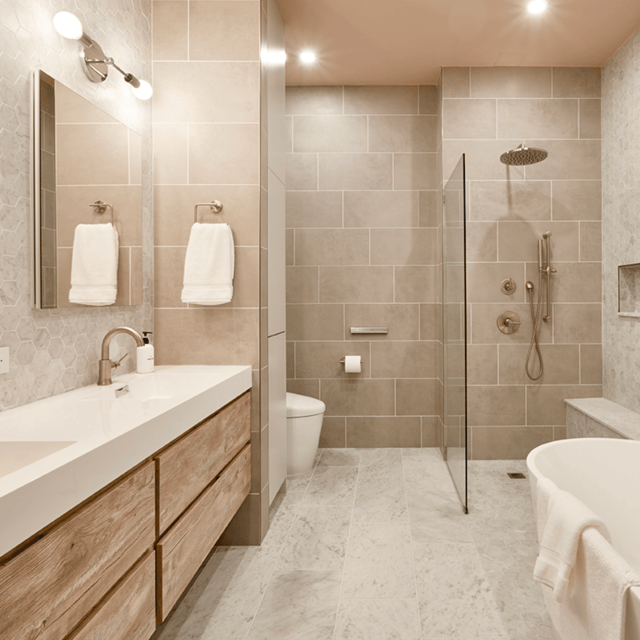
In This Article
Unless you live in a recently modernized brownstone or a condo, it’s only a matter of time until your bathroom needs an update. This is where Block Renovation comes in—we have helped New Yorkers work on hundreds of bathroom remodels. Understanding the process and costs involves effective planning and decision-making.
As metropolitan bathrooms can be on the small size, you may have to get creative. “Wall storage is the key—cabinets and niches are great,” says Meredith Sells, Block designer. “The walls are the best place to carve out, sometimes literally, new storage opportunities.”
Unlike a typical remodel that solely focuses on your design vision, New York City construction projects have a few extra hurdles. For one, permit requirements can vary significantly based on the architecture (and age) of your building as well as specific condo or co-op board requirements.
This guide will show you how you can transform your bathroom and answer the most common questions homeowners may have as they begin their bathroom remodel journey in the Big Apple.
Design a Home That’s Uniquely Yours
Block can help you achieve your renovation goals and bring your dream remodel to life with price assurance and expert support.
Get Started
The average cost to renovate a New York bathroom can range widely. An Upper East Side town home with a gracious ensuite will of course be priced differently than a small bath in a one bedroom in Long Island City. The cost variance is primarily due to the size of the bathroom, the quality of materials and fixtures chosen, and the complexity of the work required.
For example, a small, basic bathroom renovation with subway tile may cost $34,000, while a high-end renovation with wall-to-wall marble can easily run beyond $60,000. The quality and cost of materials play a huge role. Finishes like natural stone countertops, a jetted tub, a washlet toilet, or a custom vanity can quickly escalate the budget.
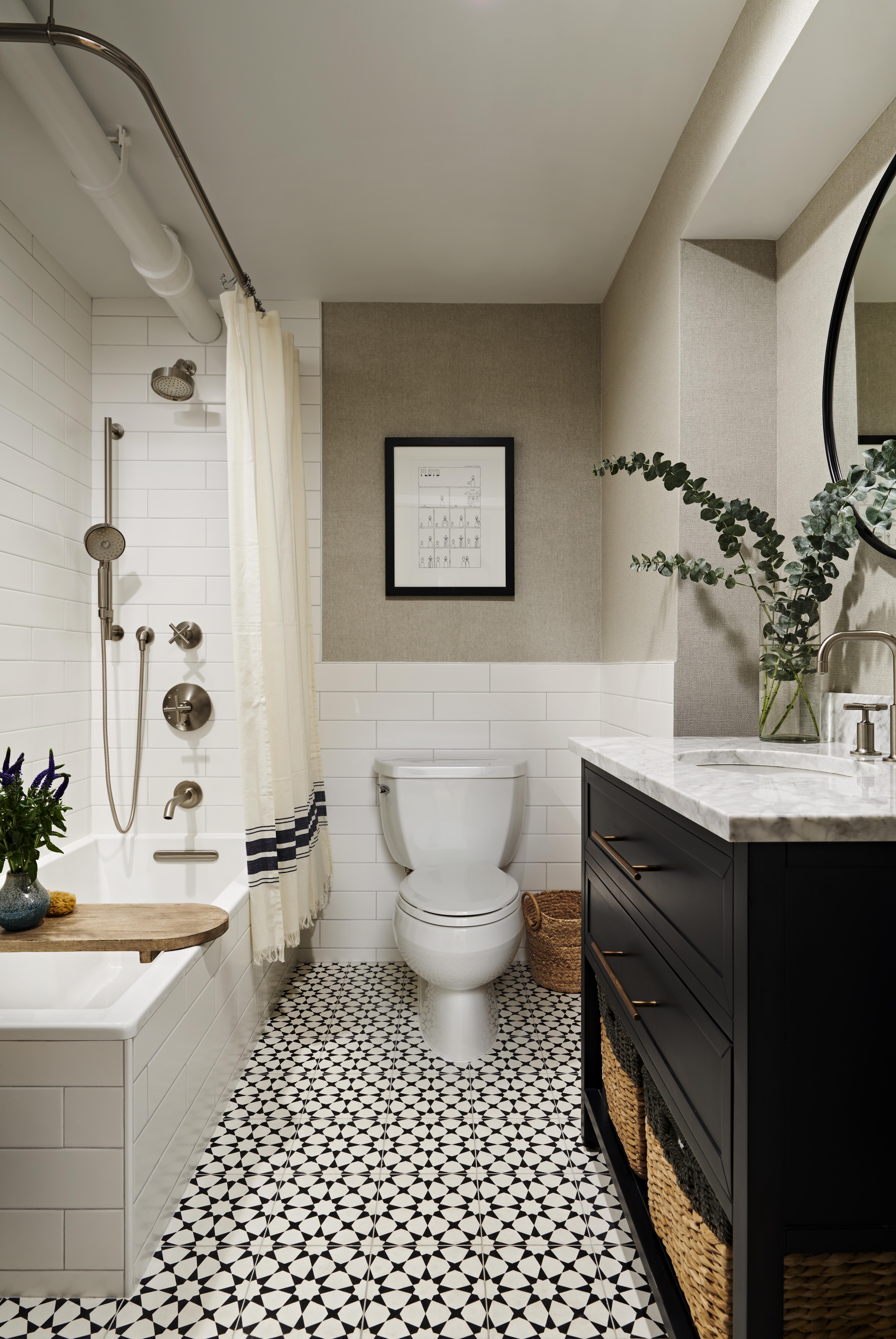
Labor is often the largest chunk of the renovation cost, particularly if extra plumbing, electrical, or structural work is part of the process. Since New York City buildings are often decades, if not a hundred years, old, you should also budget for unexpected issues such as structural problems or even mold remediation.
That’s why getting an estimate is a crucial first step. Use Renovation Studio to get instant cost estimates on your project. From there you can book a free consultation with Block, where a dedicated Project Planner will break it down further and connect you to vetted local contractors to provide detailed project proposals for you to review.
New Yorkers are used to the quick pace of life, but this may or may not apply to your bathroom renovation. Yes, the scope and complexity of the project play into the timeline, but so does material delivery and labor availability — it’s likely that a pro contractor is juggling several projects at once, each in a different stage. Before anyone breaks ground, you’ll have to wait for permits and condo/co-op board approvals.
“Permits move at their own NYC pace: private homes are faster, but co-ops and condos love their red tape. Expect 4–12 weeks for approvals, then about a week for plumbing and electrical permits—a bit longer if architectural drawings are involved,” says Sorina Panfil, contractor from Art Deco Enterprises.
Once the work is under way, a standard bathroom takes about 4–6 weeks, “assuming the renovation gods are smiling on us and your building super isn’t on vacation,” says Panfil.
Compare Proposals with Ease

It depends. You definitely need a permit and approval before you start a bathroom renovation that involves a change in layout or other structural changes. According to the NYC Department of Buildings, it is illegal to undertake this type of work without the Department’s official approval. In fact, skipping this step can result in a $25,000 fine and other legal liabilities.
The NYC DOB specifies that a Type 2 permit application is filed by a New York State licensed professional engineer (P.E.) or registered architect (R.A) for rerouting gas pipes and electrical outlets, moving a load-bearing wall, and any new bathroom addition. However, if it’s more of a DIY project that doesn’t go beyond painting, plastering, installing new cabinets, or resurfacing floors, you don’t need a permit. Just note that if you do bring in a contractor for this cosmetic work, he or she must be licensed through the Department of Consumer and Worker Protection.
Another complicating factor to renovating bathrooms in New York, is that if you live in a building with a co-op or condo board, the approval process goes hand-in-hand with complying with the building’s rules, regulations, and any applicable legal requirements.
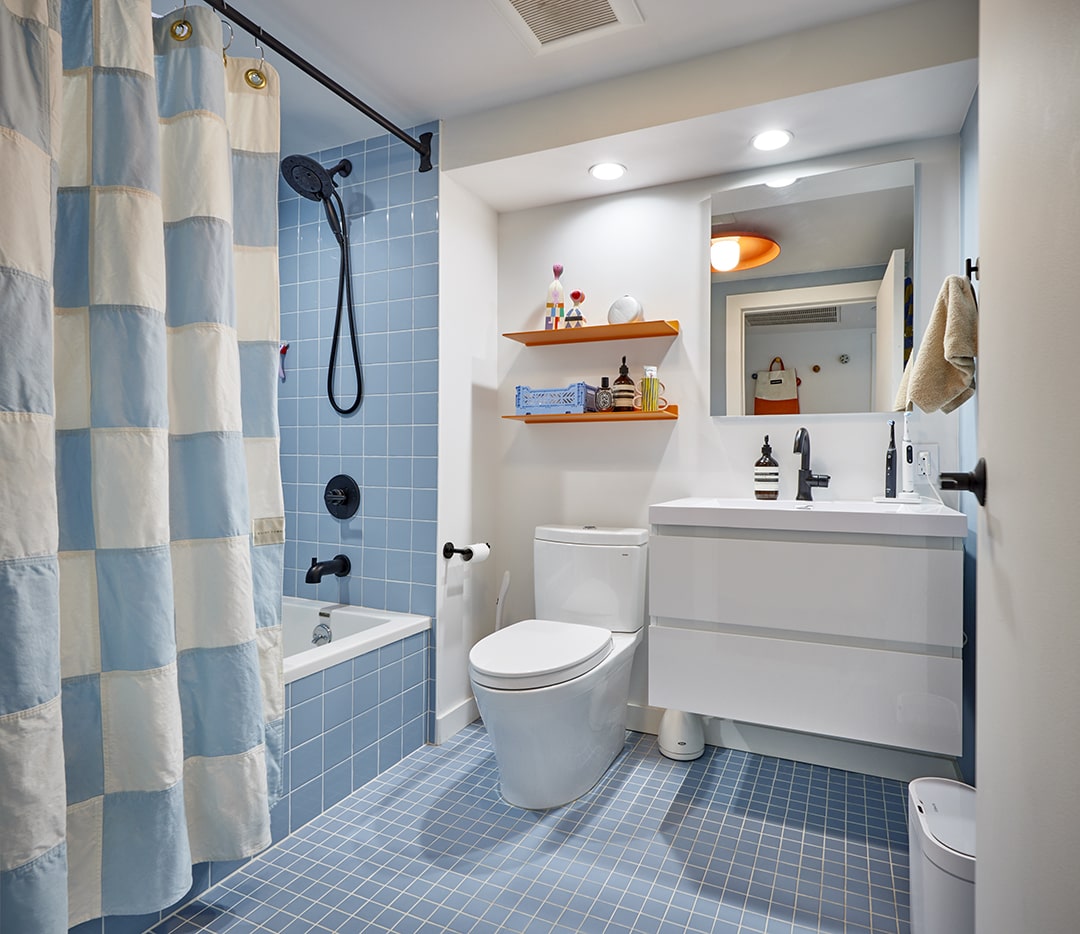
While the specific steps and requirements can vary depending on the building and its governing documents, here is a general outline of the board approval process:
Know the rules: Check building bylaws, leases, or declarations for renovation regulations, permits, noise restrictions, insurance needs, and approval processes.
Plan it out: Develop detailed plans with professionals if needed, including floor plans, specifications, and any structural documents. Gather insurance certificates, contractor qualifications, and any required permits.
Submit the application: Complete the board's form with project description, timeline, contractor info, and disruption mitigation plan. Submit it to the management office or designated representative.
Board review: While not always necessary, be prepared to present your plans, address concerns, and demonstrate compliance with building guidelines during an architectural review or board interview.
Approval and conditions: If approved, the board may set conditions like specific contractors, work hours, or additional insurance. Carefully review and comply with them.
Obtain permits: Secure any necessary city or regulatory permits from NYC DOB before starting work. The board may require proof of approval for final project go-ahead.
Sign an agreement: In some cases, sign an alteration agreement outlining your responsibilities, building requirements, and potential liabilities. Review and sign carefully.
The approval processes can vary depending on home type and management company. It’'s best to consult the building’'s management, review the governing documents, and seek guidance from professionals experienced in navigating the board approval process in your specific building and jurisdiction.
The planning phase lays the groundwork for your bathroom renovation project. During this stage, you’ll lock in your design, outline goals, and establish a budget. It’s essential to spend sufficient time in this phase to avoid potential hiccups (and costly changes) later on. A Block Project Planner can help with this phase and showcase newly completed projects to help you narrow in on your vision. Block’s Renovation Studio can help you visualize remodeling changes big and small and generate high-quality renderings to use with your contractor.
The design phase is where your renovation vision takes shape. Working with an interior designer is helpful in ensuring that all those Pinterest boards actually look good in a real space. For those who are looking for design services, Block offers the chance for you to book a 1-on-1 design consultation to get the support that you need in bringing your vision to life.
Plan to spend two to six weeks figuring out all the elements. You may have to revise your vision based on contractor feedback.
The pre-construction phase can take between five and 12 weeks and is all about preparation and ensuring that everything is in place before construction commences. This phase includes contractor selection, scheduling, ordering materials, and procuring necessary permits and materials. Timelines can vary greatly depending on material shipping timelines, project scope, and building approval.
The construction phase is when your vision comes to life. It involves the physical execution of the project, coordination with a general contractor, and regular site visits. The time frame for this phase can be anywhere from four weeks to four months.
Renovate with confidence every step of the way
Step 1: Personalize Your Renovation Plan
Step 2: Receive Quotes from Trusted Contractors
Step 3: Let Us Handle the Project Details

New York bathrooms are as varied as New Yorkers themselves. We’ve seen spacious bathrooms that can house a stand alone tub, but have also seen teeny spaces with a sink that’s no bigger than a place mat. Here is what to consider for every type of bathroom design in the city.
City dwellers often need to be ingenious to maximize every square inch in their small bathroom remodels. By New York standards, the minimum size of a small bathroom is usually 30-35 square feet, though a powder room without a shower may be only 15-20 square feet and adding a bath will often take it up to 40-45 square feet. Here is how to make the most of your tiny footprint:
Tips for renovating smaller New York bathrooms:
The rich architectural history of New York and its boroughs means that your bathroom could still have some original details from different eras, be it the 1930s, the 1960s or the aughts. To bring your space into the present you might want to consider modern elements that highlight simple form and function with natural materials like stone, marble, brass, and wood. Additionally, modern bathrooms tend to feature open-concept floor plans and airy design elements such as a seamless glass shower door.
Modern shower tiles have clean, straight lines, neutral hues, and an unfussy, streamlined aesthetic — think black and white subway tile, contemporary horizontal stacked tile, or neutral herringbone tile.
A luxury bathroom doesn’t have to be massive—even small spaces common in New York homes can exude spa-like relaxation and elegance. These bathrooms are designed to be a sanctuary for homeowners to unwind and rejuvenate after a long day. With sleek lines, high-end finishes, and state-of-the-art technology, this sort of bathroom is sure to make a statement.
Materials like marble, granite, and other natural stones are perfect for creating a sophisticated look that is anchored by timelessness and durability.
Technology is a must-have in a luxury modern bathroom. Features such as heated floors, a rain shower, and a steam shower are not only functional but also add to the spa-like atmosphere. A digital shower system allows you to control the temperature, pressure, and flow of water with the touch of a button. This can be especially helpful for those who want a consistent water temperature and pressure.
Learn More: New York City Apartment Renovation Tips
For a New York homeowner, one of the renovations that can yield the greatest ROI is building an entirely new bathroom. A big family sharing one bathroom is all too common in NYC apartments and can get old fast — but this is easier said than done. When determining if your home can accommodate an extra washroom consider the following:
Out of hundreds of bathroom renovations done with the help of Block, these are some of our favorite projects to give you inspo for your own.

A skillfully balanced budget and style resulted in this airy40-square-foot bathroom renovation in Greenwich Village. By maintaining the original layout and preserving the existing bathtub, homeowner Matt managed to cut costs. His vision for the Manhattan bathroom renovation was to create a space that felt modern yet timeless, achieved by pairing a vibrant green wall with a natural wood vanity and brass accents.
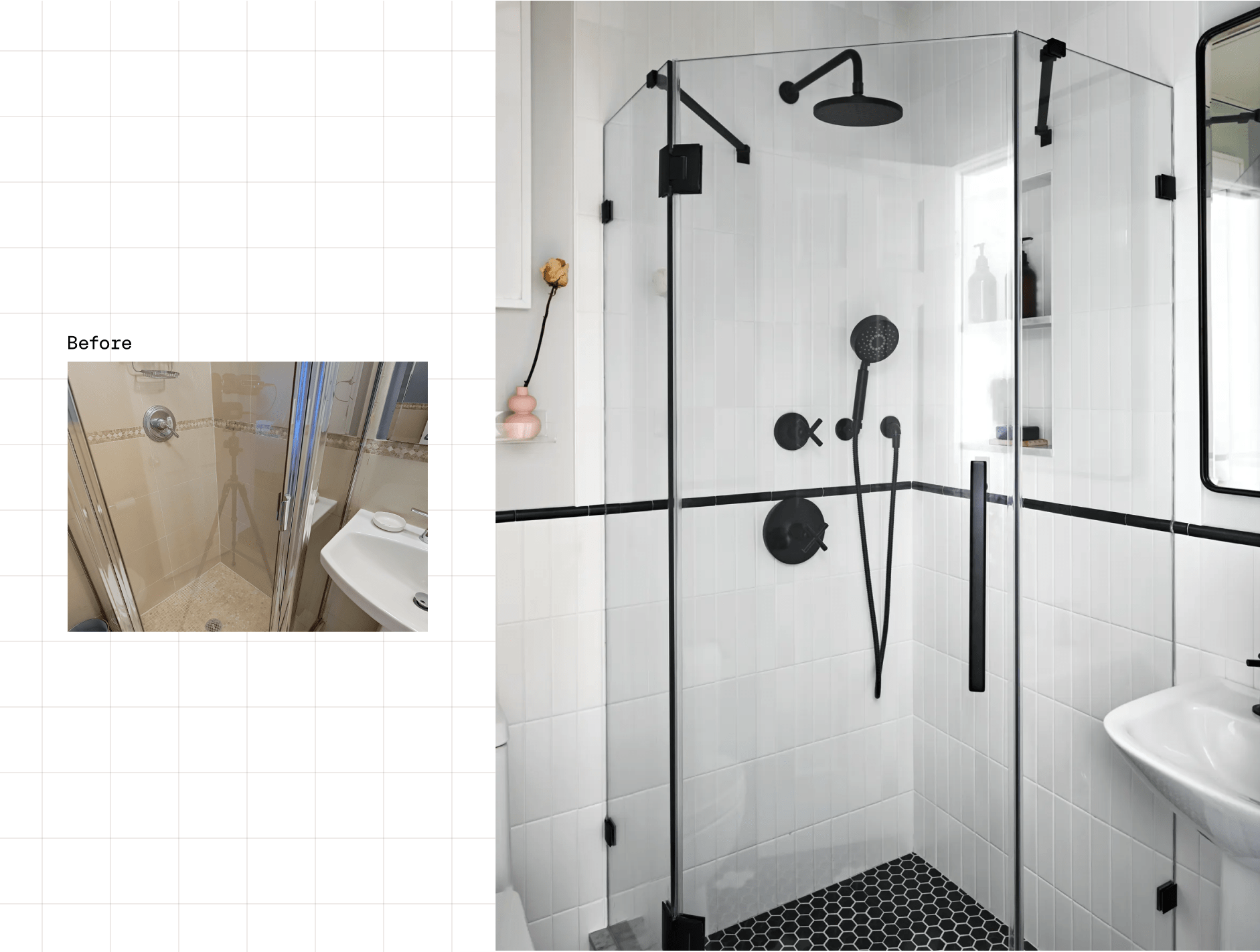
Updating the two bathrooms in a Brooklyn condo was a top priority for Chris and Ryan. Previous renovations had been difficult, but their project with Block was significantly smoother and was designed to echo the black-and-white elements throughout their apartment. Chris explained, “Compared to what we’ve done before, the build was so much more seamless and communicative. Our contractor was amazing to work with, was extremely responsive and thoughtful throughout the whole process.”

For their renovated bathrooms, they opted to create two unique looks: the black and white bath to suit Chris’s “clean-lined and structured” personality, and a playful pink bath to reflect Ryan, who Chris described as, “artsy, creative, and out there.” The 40-square-foot bath blends classic elements like white subway tile and brass fixtures with whimsical elements like the arched mirror and green shower curtain.

Grace, a first-time renovator residing in Williamsburg, aimed to transform her 40-square-foot bathroom with a tub-to-shower conversion. Her Brooklyn apartment's aesthetic, a fusion of bohemian and classic elements, was maintained in the bathroom design, where she incorporated whimsical, patterned tiles into the wall niche. “I truly cannot be happier. It feels like I'm going to the spa,” says Grace, who was nervous going into the renovation but was relieved at how smooth it went."
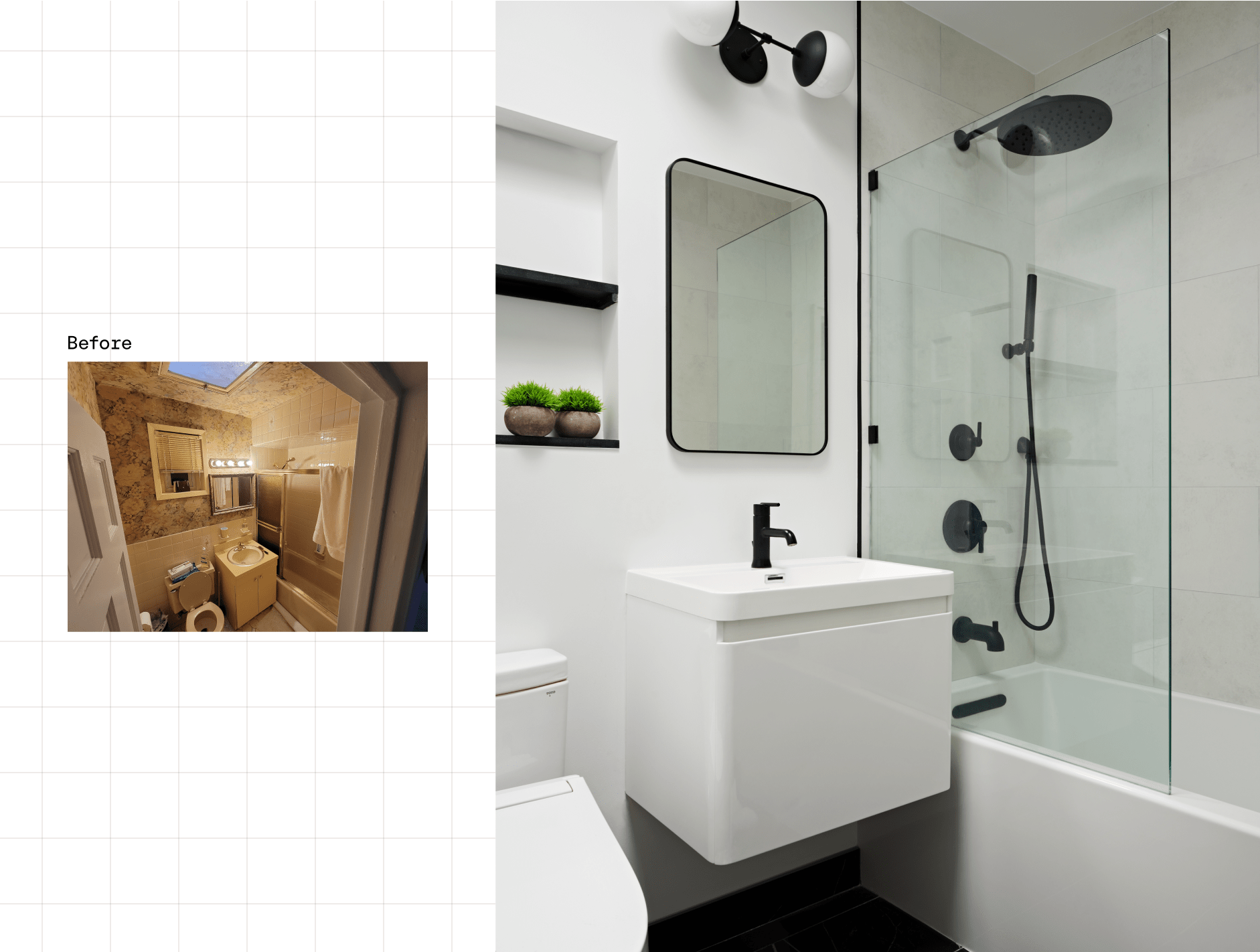
Transforming the bland, beige space into a sleek black-and-white retreat is exactly what Peter needed. During the renovation of the outdated 40-square-foot room, he focused on enhancing storage options, incorporating both open shelving and a vanity to achieve a clutter-free space.
Your contractor is the single most important actor in your bathroom renovation production — whether large or small. They’ll be your main point person, troubleshooter, and expert guiding your project to completion. Because of their importance, it’s critical that you pick the best person for the job. But finding a quality contractor can be confusing and time-intensive. Where do you begin? How do you know which one is right for you?
Block makes it easy by matching you with up to three New York bathroom remodel contractors from our network. Our robust vetting process ensures that every contractor has:
Once you’re matched with contractors, they will prepare detailed proposals that you can review apples to apples to decide who you want to work with.
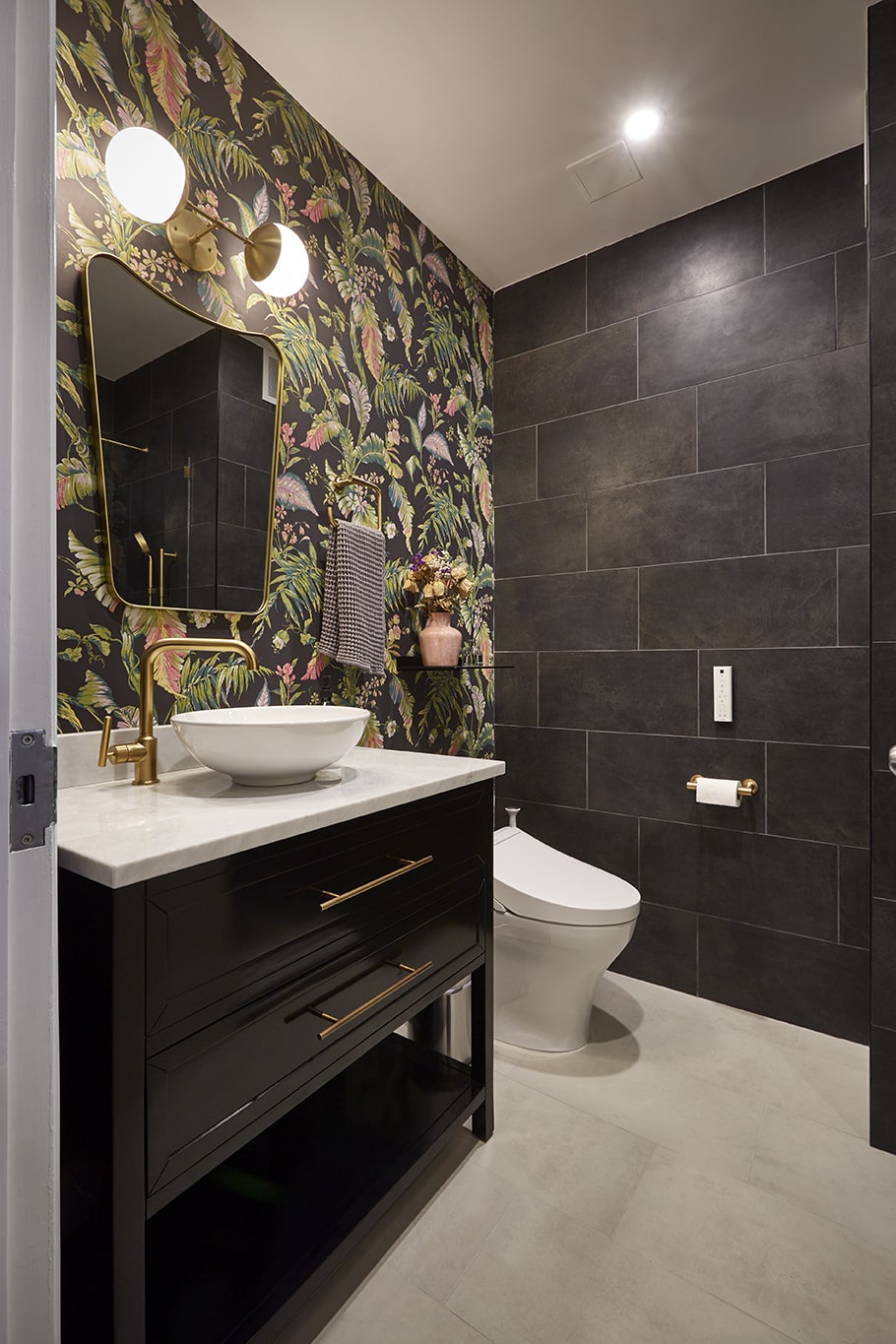
The team at Block Renovation has learned a lot from helping hundreds of New Yorkers remodel their bathrooms. Our goal is to enable you to tackle your renovation confidently with top quality contractors, warranty and price protections, and access to expert resources. Get started with your New York City bathroom renovation today.

Written by Block Renovation
How much does a bathroom remodel cost in NYC
How long does it take to complete a bathroom remodel in NYC?
Do I need a permit to remodel my bathroom in New York City?
What are some space-saving design ideas for small NYC bathrooms?
How can I find a reliable contractor for my NYC bathroom remodel?
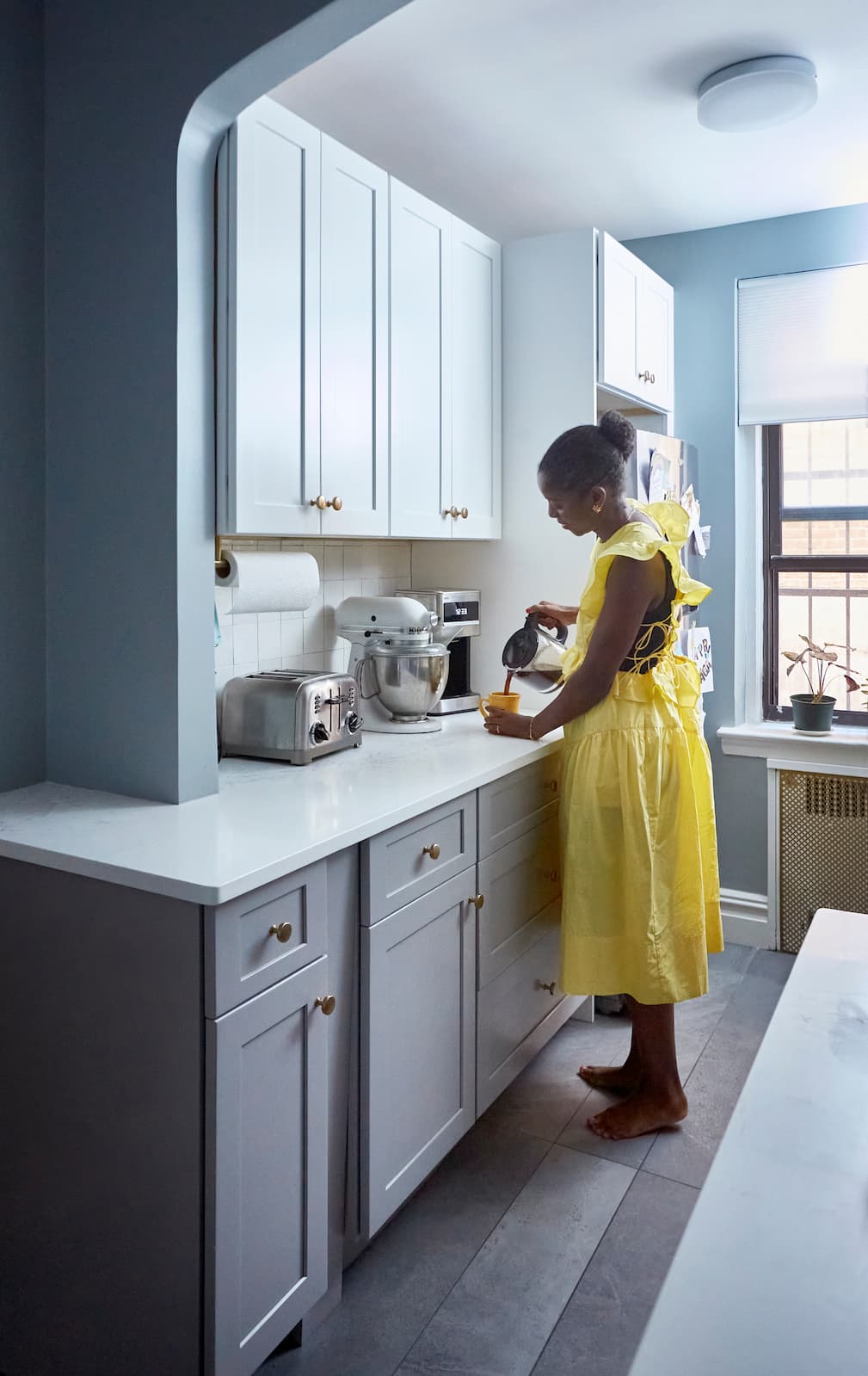
Renovate confidently with Block
Easily compare quotes from top quality contractors, and get peace of mind with warranty & price protections.
Thousands of homeowners have renovated with Block

4.5 Stars (100+)

4.7 Stars (100+)

4.5 Stars (75+)

Bathroom
Eco-Friendly Shower & Bathroom Ideas
12.23.2025

Bathroom
New York City Bathroom Remodels: Planning & Renovation Tips
12.05.2025

New York
Best Brooklyn Contractors: Guide to Trusted Renovation Specialists
11.27.2025

Bathroom
Slanted Roof Bathrooms and Shower Design Ideas
11.22.2025

New York
NYC Office Renovations: Contractors & Remodeling Tips
11.14.2025
Renovate confidently